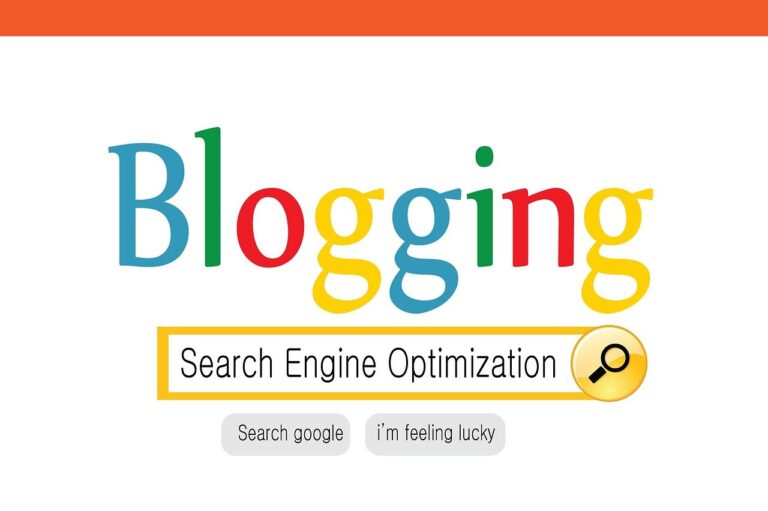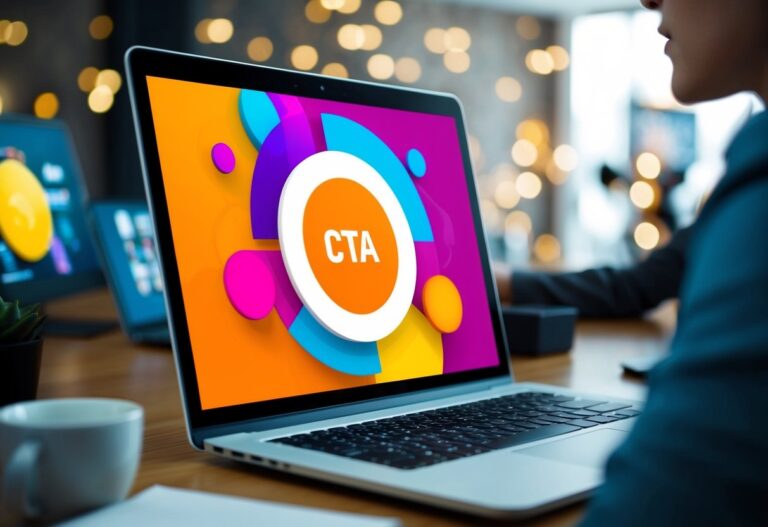Understanding On-Page Optimization
On-page optimization is a crucial component of search engine optimization that focuses on optimizing individual web pages. It involves various techniques to improve a page’s visibility and ranking in search engine results.
Importance Of On-Page SEO For Holistic Websites
On-page SEO plays a vital role in the success of holistic websites. It helps search engines understand your content better, improving your chances of ranking higher in search results. By implementing effective on-page techniques, you can boost your organic visibility and drive growth.
On-page optimization also enhances user experience, making it easier for visitors to navigate your site and find relevant information. This can lead to increased engagement, lower bounce rates, and higher conversion rates.
For holistic websites, on-page SEO is particularly important as it allows you to showcase your expertise and authority in your niche. By optimizing your content for relevant keywords and providing valuable information, you can attract your target audience more effectively.
Overview Of Key On-Page SEO Elements
Several key elements contribute to effective on-page optimization. Title tags and meta descriptions are crucial for both search engines and users. They provide a concise summary of your page’s content and can significantly impact click-through rates from search results.
Headers (H1, H2, H3) help structure your content and make it more readable for both users and search engines. Use them to organize your information logically and include relevant keywords where appropriate.
Content quality is paramount in on-page SEO. Create informative, engaging, and unique content that addresses your audience’s needs. Incorporate relevant keywords naturally throughout your text.
Other important elements include:
- URL structure
- Internal linking
- Image optimization (including alt text)
- Page loading speed
- Mobile-friendliness
By focusing on these key elements, you can create a solid foundation for your holistic website’s on-page SEO strategy.
Keyword Research For Holistic Practitioners
Effective keyword research is crucial for holistic practitioners to improve their online visibility and attract the right audience. By identifying relevant terms, focusing on long-tail keywords, and analyzing competitor strategies, you can create a robust foundation for your SEO efforts.
Identifying Relevant Keywords
Start by brainstorming a list of terms related to your holistic practice. Consider the services you offer, conditions you treat, and methodologies you use. Use keyword research tools like Google Keyword Planner or SEMrush to expand your list and gather data on search volumes and competition.
Focus on terms that potential clients might use when searching for holistic health services. For example, if you’re an acupuncturist, relevant keywords could include:
- Acupuncture for back pain
- Holistic pain management
- Alternative medicine for stress relief
Don’t forget to include location-based keywords if you serve a specific area, such as “acupuncture in [your city]” or “[your state] holistic health practitioner.”
Using Long-Tail Keywords
Long-tail keywords are more specific phrases that typically have lower search volumes but higher conversion rates. These are particularly valuable for holistic practitioners as they often target users with specific needs or interests.
Examples of long-tail keywords for a holistic nutritionist might include:
- Gluten-free meal plans for weight loss
- Natural remedies for menopausal symptoms
- Vegan protein sources for athletes
By incorporating these specific phrases into your content, you can attract highly targeted traffic to your website. Long-tail keywords also face less competition, making it easier for you to rank higher in search results.
Analyzing Competitor Keywords
Studying your competitors’ keyword strategies can provide valuable insights and uncover opportunities you might have missed. Use SEO tools to analyze the keywords your competitors are ranking for and identify gaps in your own strategy.
Look for:
- High-performing keywords you’re not targeting
- Topics your competitors are covering extensively
- Areas where you can provide unique value or perspective
Remember to focus on keywords specific to your holistic practice and local area. This targeted approach will help you stand out in your niche and attract clients who are most likely to benefit from your services.
Content Optimization Strategies
Effective content optimization enhances your website’s visibility and relevance in search results. Focus on creating high-quality content, strategic keyword placement, and maintaining reader engagement to boost your online presence.
Creating High-Quality, Relevant Content
High-quality content is the cornerstone of successful content optimization. Aim to provide value to your readers by addressing their needs and questions. Research your target audience thoroughly to understand their interests and pain points.
Create original, in-depth content that offers unique insights or solutions. Use data, statistics, and examples to support your points and increase credibility.
Incorporate visual elements like images, infographics, and videos to enhance understanding and engagement. Keep your content up-to-date by regularly reviewing and refreshing it with new information.
Utilizing Keyword Placement
Strategic keyword placement is crucial for improving your content’s search visibility. Start by conducting thorough keyword research to identify relevant terms your audience is searching for.
Include your primary keyword in:
- Title tag
- H1 heading
- First paragraph
- Throughout the content (naturally)
- Meta description
- Image alt text
Use related keywords and synonyms to broaden your content’s reach. Avoid keyword stuffing, which can harm your search rankings and readability.
Maintaining Readability And Engagement
Readable and engaging content keeps visitors on your page longer, signaling quality to search engines. Use short paragraphs, bullet points, and subheadings to break up text and improve scannability.
Write in a clear, concise style. Avoid jargon and complex language unless necessary for your audience. Use active voice and strong verbs to make your writing more dynamic.
Incorporate interactive elements like quizzes, polls, or calculators to boost engagement. Optimize your content’s structure with a logical flow of ideas, making it easy for readers to follow and understand your message.
Optimizing Meta Tags

Meta tags play a crucial role in on-page optimization. They provide search engines with essential information about your web pages and influence how they appear in search results.
Crafting Effective Title Tags
Title tags are one of the most important on-page SEO elements. They appear as the clickable headline in search engine results pages (SERPs). Optimize your title tags by including your target keyword near the beginning and keeping them under 60 characters.
Make your titles descriptive and compelling to encourage clicks. Use a unique title for each page on your website. Avoid keyword stuffing, as it can harm your rankings and user experience.
Consider including your brand name at the end of the title, especially for your homepage and main landing pages. This helps with brand recognition and can improve click-through rates.
Writing Compelling Meta Descriptions
Meta descriptions provide a brief summary of your page’s content. While they don’t directly impact rankings, they can significantly influence click-through rates. Create meta descriptions that accurately reflect your page’s content and include your target keywords.
Keep your descriptions between 150-160 characters to ensure they display fully in search results. Use action-oriented language to encourage users to click. Highlight unique selling points or offers to make your listing stand out.
Avoid duplicate meta descriptions across your site. Each page should have a unique description tailored to its specific content. Include a clear call-to-action when appropriate to drive user engagement.
Best Practices For Meta Tags
To maximize the effectiveness of your meta tags:
- Use relevant keywords naturally in both title tags and meta descriptions.
- Avoid keyword stuffing or deceptive practices.
- Update meta tags regularly to reflect any changes in your content or target keywords.
- Ensure consistency between your meta tags and page content.
- Use schema markup to provide additional context to search engines.
Consider using tools like Google Search Console to monitor how your meta tags perform in search results. Regularly test different variations to improve click-through rates. Remember, well-optimized meta tags can significantly boost your search visibility and drive more targeted traffic to your website.
Using Header Tags Effectively

Header tags play a crucial role in organizing and structuring your website content. They help both users and search engines understand the hierarchy and importance of information on your pages.
Structuring Content With Header Tags
Header tags provide a clear outline for your content. Use H1 for your main title, H2 for major sections, and H3 for subsections. This creates a logical flow that guides readers through your page.
Properly structured content improves readability and user experience. It allows visitors to quickly scan and find the information they need.
Search engines use header tags to grasp the context and relevance of your content. This can positively impact your search rankings.
Importance Of H1, H2, And H3 Tags
H1 tags are typically used for the main page title. You should only use one H1 per page to avoid confusing search engines and readers.
H2 tags break your content into major sections. They help organize your main ideas and make your page more scannable.
H3 tags further divide H2 sections into smaller subsections. This creates a clear hierarchy and helps readers find specific information easily.
Using these tags correctly improves your content structure and enhances both user experience and SEO performance.
Optimizing Headers For SEO
Include relevant keywords in your header tags to signal the main topics of your content to search engines. This can boost your page’s visibility for those terms.
Ensure your headers accurately reflect the content that follows. Misleading headers can frustrate users and harm your SEO efforts.
Keep your headers concise and descriptive. Aim for 5-7 words maximum to maintain clarity and impact.
Regularly audit your headings to ensure they align with current SEO best practices and user needs. This ongoing optimization can help maintain and improve your search rankings over time.
Internal Linking Strategies

Internal linking connects related pages on your website, enhancing user experience and search engine optimization. Effective internal linking improves site navigation, distributes page authority, and helps search engines understand your content structure.
Benefits Of Internal Linking
Internal links boost your site’s search engine visibility by guiding crawlers to important pages. They help distribute link equity throughout your site, potentially improving rankings for key pages. Internal links also increase user engagement by providing easy access to relevant content.
You’ll see reduced bounce rates as visitors explore more of your site. This increased time on site can positively impact your search rankings. Internal links also help establish content hierarchies, making it easier for search engines to understand your site’s structure and topical relevance.
By linking to older content, you can breathe new life into valuable but overlooked pages. This strategy helps maintain the relevance of your entire site over time.
Creating A Logical Link Structure
Start by mapping out your site’s structure. Group related content into categories and subcategories. This organizational approach helps you identify natural linking opportunities between topically related pages.
Use your main navigation to link to top-level category pages. From there, link to more specific subcategories and individual posts or products. This creates a clear path for users and search engines to follow.
Consider implementing a “hub and spoke” model. Create comprehensive pillar pages that link out to more specific, related content. This structure signals to search engines which pages are most important for particular topics.
Use descriptive, keyword-rich anchor text for your internal links. This helps both users and search engines understand the context of the linked page.
Best Practices For Internal Links
Place internal links naturally within your content. Avoid forcing links where they don’t fit contextually.
Aim for a balance – too many internal links can overwhelm readers and dilute link value.
Regularly audit your internal links to find and fix broken links. Broken links frustrate users and waste crawl budget.
Use tools like Google Search Console to identify and resolve these issues.
Prioritize linking to your most important pages. These might be conversion-focused pages or cornerstone content pieces.
Don’t neglect deep pages – linking to them can improve their visibility and performance.
Update old content with links to newer, relevant articles. This keeps your content fresh and helps distribute link equity to your latest work.
Consider using breadcrumbs to enhance navigation and provide additional internal linking opportunities. Breadcrumbs help users understand their location within your site structure.
Additional On-Page SEO Considerations

Effective on-page optimization extends beyond basic elements like titles and meta descriptions.
Enhancing your website’s visual content, mobile experience, and loading speed can significantly boost your search visibility and user engagement.
Image Optimization Techniques
Visual content plays a crucial role in user experience and SEO. Start by selecting high-quality, relevant images that complement your text.
Compress your images to reduce file size without compromising quality.
Use descriptive, keyword-rich file names for your images.
Implement alt text for all images to improve accessibility and provide context for search engines. Keep alt text concise and descriptive, including relevant keywords when appropriate.
Consider using responsive images that adapt to different screen sizes. This ensures optimal display across various devices and improves page load times.
Mobile-Friendly Design
With mobile searches dominating internet traffic, a mobile-friendly website is essential for SEO success.
Implement a responsive design that adjusts seamlessly to different screen sizes.
Ensure text is readable without zooming and buttons are easily tappable on smaller screens.
Minimize the use of pop-ups and interstitials that can disrupt the mobile user experience.
Test your website’s mobile-friendliness using tools like Google’s Mobile-Friendly Test. Address any issues promptly to improve your mobile rankings.
Consider implementing Accelerated Mobile Pages (AMP) for lightning-fast loading on mobile devices.
Page Load Speed And Its Impact On SEO
Page speed is a critical ranking factor and directly affects user experience. Start by minimizing HTTP requests and leveraging browser caching to reduce load times.
Optimize your code by minifying CSS, JavaScript, and HTML. Remove unnecessary characters and formatting to reduce file sizes.
Utilize a Content Delivery Network (CDN) to serve your content from servers closest to your users’ geographical locations. This reduces latency and improves load times.
Implement lazy loading for images and videos to prioritize above-the-fold content. This technique can significantly improve perceived load times and user engagement.
Frequently Asked Questions

On-page optimization techniques are crucial for improving search visibility and user experience. These strategies encompass various elements, from content creation to technical improvements, all aimed at enhancing a website’s performance in search results.
How can I implement on-page SEO to enhance my website’s user experience?
Focus on creating high-quality, relevant content that addresses your visitors’ needs.
Optimize your page titles, meta descriptions, and headers to accurately reflect the content.
Improve your site’s loading speed by compressing images and minifying code.
Ensure your website is mobile-friendly and easy to navigate.
What are the key factors in on-page SEO that influence website visibility?
Key factors include keyword optimization, content quality, internal linking structure, and technical elements like site speed and mobile responsiveness.
Use relevant keywords naturally in your content, headings, and meta tags.
Create valuable, in-depth content that answers user queries.
Implement a logical internal linking strategy to help search engines understand your site structure.
What are some effective on-page optimization strategies for content-rich websites?
Implement a clear content hierarchy using proper heading tags (H1, H2, H3).
Use descriptive URLs that include relevant keywords.
Optimize images with alt text and compress them for faster loading.
Create a sitemap to help search engines crawl your site more efficiently.
Regularly update your content to keep it fresh and relevant.
How do holistic SEO practices integrate with on-page optimization techniques?
Holistic SEO combines multiple aspects of optimization, including on-page techniques, to create a comprehensive strategy.
It focuses on improving overall user experience while addressing technical SEO elements.
Integrate on-page optimization with content strategy, user experience design, and technical improvements to create a well-rounded approach to SEO.
Which on-page SEO tools are essential for analyzing and improving website performance?
Google Search Console helps you monitor your site’s performance in search results and identify issues.
SEMrush or Ahrefs provide comprehensive keyword research and competitor analysis tools.
PageSpeed Insights analyzes your site’s loading speed and offers improvement suggestions.
Screaming Frog SEO Spider helps audit your site’s structure and identify technical SEO issues.
What are the best practices for conducting an on-page SEO audit to identify areas for improvement?
Start by analyzing your site’s structure and content hierarchy. Check for duplicate content issues and thin content pages.
Evaluate your keyword usage and ensure it aligns with user intent. Assess your website’s loading speed and mobile-friendliness.
Review your meta tags, headers, and internal linking structure. Identify and fix broken links and 404 errors.






